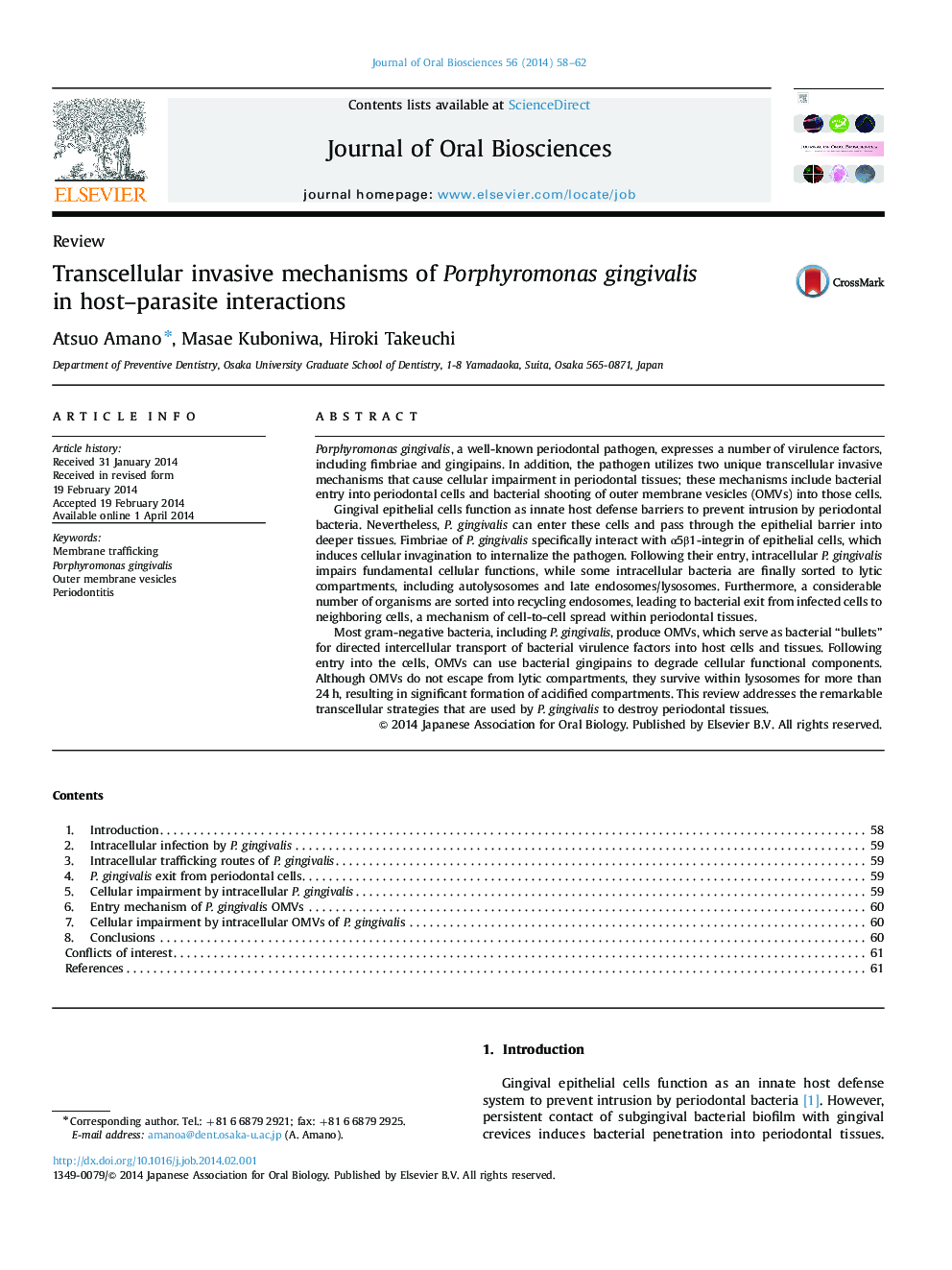| Article ID | Journal | Published Year | Pages | File Type |
|---|---|---|---|---|
| 2776867 | Journal of Oral Biosciences | 2014 | 5 Pages |
Porphyromonas gingivalis, a well-known periodontal pathogen, expresses a number of virulence factors, including fimbriae and gingipains. In addition, the pathogen utilizes two unique transcellular invasive mechanisms that cause cellular impairment in periodontal tissues; these mechanisms include bacterial entry into periodontal cells and bacterial shooting of outer membrane vesicles (OMVs) into those cells.Gingival epithelial cells function as innate host defense barriers to prevent intrusion by periodontal bacteria. Nevertheless, P. gingivalis can enter these cells and pass through the epithelial barrier into deeper tissues. Fimbriae of P. gingivalis specifically interact with α5β1-integrin of epithelial cells, which induces cellular invagination to internalize the pathogen. Following their entry, intracellular P. gingivalis impairs fundamental cellular functions, while some intracellular bacteria are finally sorted to lytic compartments, including autolysosomes and late endosomes/lysosomes. Furthermore, a considerable number of organisms are sorted into recycling endosomes, leading to bacterial exit from infected cells to neighboring cells, a mechanism of cell-to-cell spread within periodontal tissues.Most gram-negative bacteria, including P. gingivalis, produce OMVs, which serve as bacterial “bullets” for directed intercellular transport of bacterial virulence factors into host cells and tissues. Following entry into the cells, OMVs can use bacterial gingipains to degrade cellular functional components. Although OMVs do not escape from lytic compartments, they survive within lysosomes for more than 24 h, resulting in significant formation of acidified compartments. This review addresses the remarkable transcellular strategies that are used by P. gingivalis to destroy periodontal tissues.
